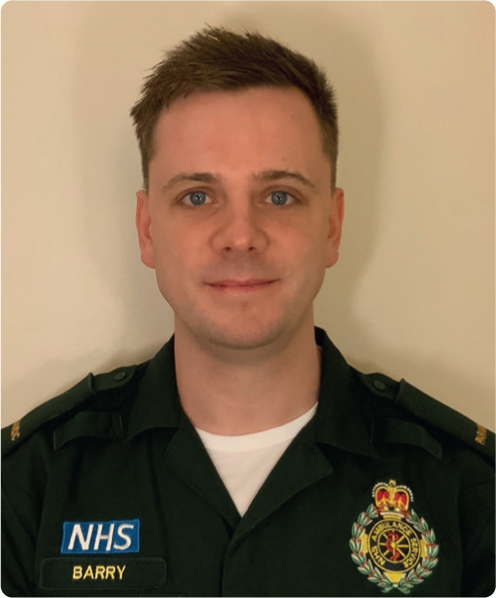
‘No one likes change except babies in diapers.’ This sentiment could not be more true of the journey and emotions of finally making the leap from student to autonomous practitioner, operating in the unpredictable, and unrelenting world of prehospital care. My clinical mentor once likened it to a mother bird ripping her hatchling from the nest and throwing it vigorously into the air while shouting ‘Fly! You're free!’—as it falls 20 feet to the ground, blind, and still in the foetal position.
As a student paramedic at the University of Surrey for the last 3 years, I was comfortable—at least to the point that I was never afraid to get ‘stuck-in’, knowing full well that if something went wrong, I would have a ‘grown-up’ there to make it all better. Six months on, and in the midst of a global pandemic, I now find myself in the reverse role—I am ‘the help’, I am the paramedic.
While on the face of it, this may appear daunting, the transitional process is not one that is intended to be taken alone, or in isolation irrespective of the trust that the NQP ultimately decides to work for, if indeed they do decide to work for the ambulance service. The national preceptorship framework for NQPs aims to develop core attributes such as knowledge, skills and leadership in the form of a portfolio over a 2-year period in line with the Health and Care Professions Council (HCPC) Standards of proficiency for paramedics. However, the means by which this is implemented, and indeed the support received throughout the first 300 hours of clinical practice as an NQP, can vary between trusts, and this is something that I was quite particular about when choosing where to work.
Over the course of my first 300 hours as an NQP with the South East Coast Ambulance Service (SECAmb), I had been placed with an experienced band 6 paramedic to help with my initial transition period before I would then work with non-registered clinicians on a double-crewed ambulance. It was during this phase that I encountered an entity, or state of mind, that I have now come to know as ‘student brain’. Student brain embodied the dying embers of my 3 years as a student paramedic, and would routinely assume that all patients were close to death, raising my heart rate above 100 almost every shift. Student brain would also request permission from my band 6 crew mate to use the toilet, when turning on the blue lights and sirens, or prior to carrying out any form of clinical intervention above the scope of a student paramedic. However, after some good support and reassurance from friends and colleagues within the service, student brain is beginning to visit with decreasing frequency, and I can say with confidence that I am starting to ‘find my feet’ as a paramedic.
Don't get me wrong, there are days when I can still feel my heart beating out of my chest on shift, or when I catch a glimpse of myself in a mirror at hospital and see those paramedic slides on my shoulders. It doesn't take long though for this feeling to subside and be replaced with an overwhelming sense of pride in the knowledge that I am a part of something greater than myself, at a time when the NHS could not be more valued by the public, and patient-centred care never more vital. I hope one day soon, the nerves will pass—but until then, I plan to follow the advice my grandmother gave me when I was younger: ′head up, shoulders back, and fake it ′til you make it kid′.

